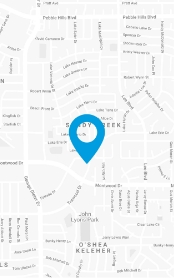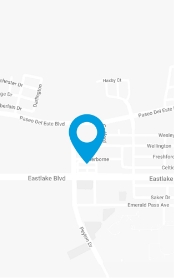Corneal Cross Linking

At LASIK, Cornea & Cataract Specialty Center in El Paso, Texas, our ophthalmology experts are proud to offer the only FDA-approved method of corneal cross-linking as a treatment to stop the progression of keratoconus.
What is Corneal Cross-Linking?
How Does Corneal Cross-Linking Work?
Corneal Cross-Linking: What to Expect
Preparing for Corneal Cross-Linking
The Corneal Cross-Linking Procedure
What is Corneal Cross-Linking?
Corneal cross-linking, also referred to as corneal collagen cross-linking or CXL, is a minimally-invasive treatment for progressive keratoconus and ectasia resulting from vision correction surgery. In the past, keratoconus and ectasia could only be treated with rigid gas permeable contact lenses or corneal transplants.
If left untreated, 1 in 5 keratoconus patients may require a
Trusted Source
Extended long-term outcomes of penetrating keratoplasty for keratoconus
Pramanik S, Musch DC, Sutphin JE, Farjo AA
Go to Source
corneal transplant
or multiple transplants over the course of a lifetime. With corneal cross-linking, your ophthalmologist is able to stiffen corneas that have been weakened by keratoconus or refractive surgery.
Ideally, this halts the progression of keratoconus and vision loss to prevent the need for a corneal transplant. Corneal cross-linking may also improve a patient’s vision.
At LASIK, Cornea & Cataract Specialty Center, we use the FDA-approved iLink™ system for corneal cross-linking. This was formerly known as the Avedro KXL System.
How Does Corneal Cross-Linking Work?
Corneal cross-linking is meant to stop the progression of keratoconus or corneal ectasia. This is done through a combination of riboflavin (Vitamin B2) eye drops and UV light (ultraviolet light) therapy, which strengthens the collagen fibers in the cornea. We perform epithelium-off corneal cross-linking, which involves disrupting the top layer of the cornea so that the riboflavin eye drops can properly saturate the cornea before exposure to UV light.

Corneal Cross-Linking: What to Expect
Preparing for Corneal Cross-Linking
The most important step in preparing for corneal cross-linking is to attend a consultation and eye exam with an ophthalmologist you trust. If you are deemed a candidate for corneal cross-linking, your procedure will be scheduled as soon as possible. Please note that you will not be able to drive yourself home after the procedure, so you should arrange for transportation.
The Corneal Cross-Linking Procedure
Corneal cross-linking is an outpatient procedure that takes roughly an hour, though you should expect to be at our eye care center for a few hours on the day of your procedure.
Before beginning the
Trusted Source
What is Cross-Linking?
Glaukos Corporation
Go to Source
corneal cross-linking procedure
, your eye doctor will apply anesthetic eye drops to help you remain comfortable and you may also be given an oral sedative to help you relax. Next, the thin outer layer of the corneal tissue (the corneal epithelium) is removed and Photrexa® Viscous eye drops with riboflavin are applied for at least 30 minutes. In the final phase of iLink corneal cross-linking, the cornea is exposed to a UV light for 30 minutes.
Recovery After Corneal Cross-Linking
Following corneal cross-linking, a bandage contact lens will be placed over the surface of your eye. Once the numbing drops wear off, you may experience some discomfort, burning, a sensation of grittiness in the treated eye, or increased light sensitivity. Please do not rub your eyes for the first five days after corneal cross-linking.
Hear from our patients!
Frequently Asked Questions About Corneal Cross-Linking
How much does corneal cross-linking cost?
For most of our patients, corneal cross-linking for the treatment of progressive keratoconus or corneal ectasia from refractive surgery is deemed medically necessary and is eligible for insurance coverage. If you are concerned about the cost of corneal-cross linking, a member of our staff can help you review payment and financing options.
Is corneal cross-linking painful?
The corneal cross-linking procedure itself is not painful. You may, however, encounter some discomfort during the recovery process. Most patients are able to remain comfortable with over-the-counter pain medication, but your eye doctor can prescribe medication should you require it.
Will my eyes look different after corneal cross-linking?
No. There is no change in the appearance of the eyes after corneal cross-linking.
TREATING FAMILIES - NOT JUST THEIR CONDITIONS
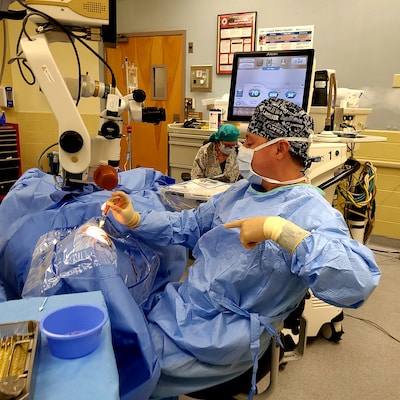
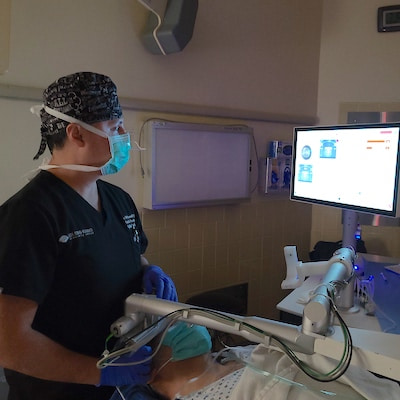
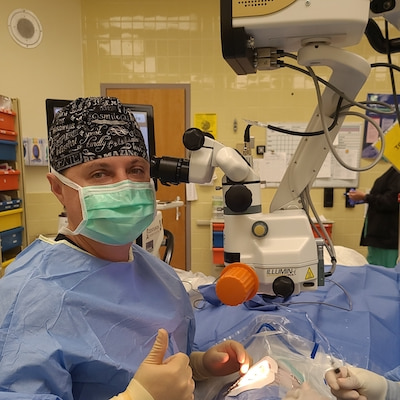
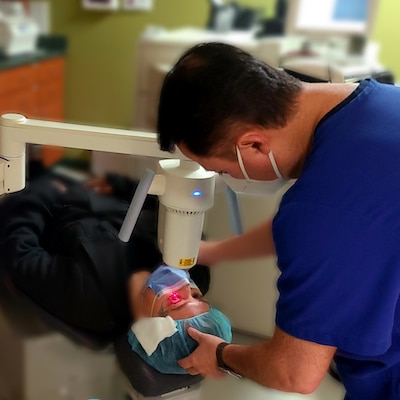
1Pramanik S, Musch DC, Sutphin JE, Farjo AA. Extended long-term outcomes of penetrating keratoplasty for keratoconus. Available: https://pubmed.ncbi.nlm.nih.gov/16828503/#:~:text=Kaplan%2DMeier%20analysis%20estimated%20a,of%2020%2F40%20or%20better. Accessed May 20, 2022.
2Glaukos Corporation. What is Cross-Linking? Available: https://www.livingwithkeratoconus.com/what-is-cross-linking/. Accessed May 20, 2022.

